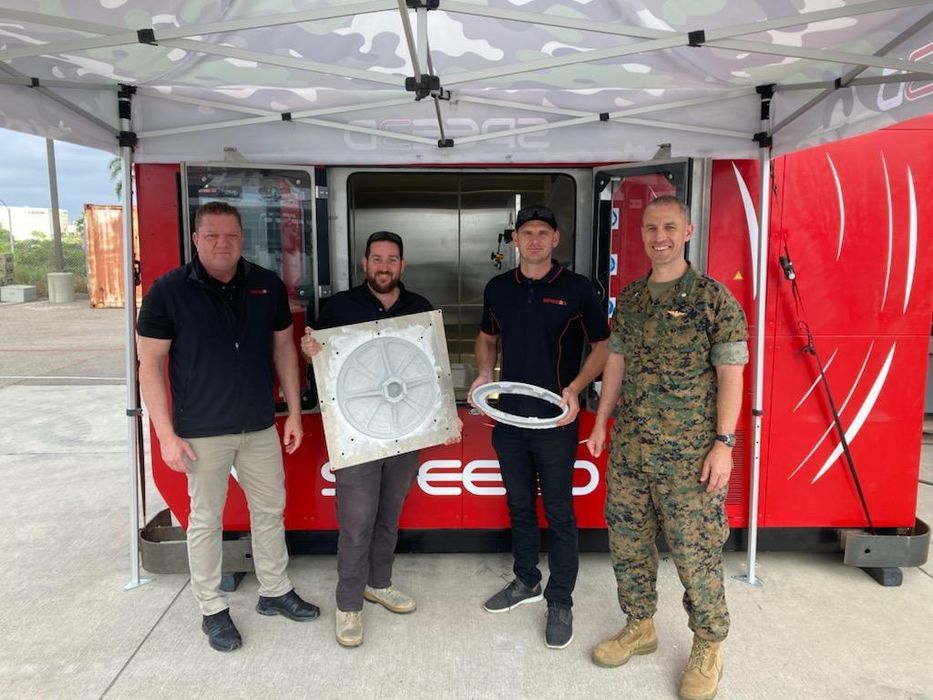
SPEE3D has demonstrated their AM capability in war — almost.
The Australian company produces a unique “supersonic” metal 3D printer that uses kinetic energy to blast metal powder into fully formed 3D objects. They can very rapidly produce rough metal parts.
One of the interesting aspects of their technology is that it is far more amenable to rough environmental conditions than the more typically found LPBF metal 3D printers. Those devices require specially designed workspaces, absence of vibration or tipping, etc. They work well, but not in the conditions a defense force might find themselves.
Because of this, various militaries have shown considerable interest in SPEE3D’s technology. The company has done multiple trials with several military organizations around the world, and even had a metal 3D printer installed on a US Navy ship for trials.
The latest news is that they have successfully participated in a military exercise, the Marine Corps Annual Integrated Training Exercise, or “ITX”.
This was an operation with 3700 participants from infantry, artillery, aircraft, logistics and others. The intent was to train battalion and squadron-sized units in combined-arms warfare.
What would SPEE3D be doing in such an event? They explain:
“SPEE3D’s WarpSPEE3D was deployed to print crucial parts that were broken, brought from ground support at the Marine Corps Air Station in Miramar, California, and then flown to the live fire Marine Corps Air Ground Combat Center Twentynine Palms, California. SPEE3D has repeatedly proven its expeditionary point-of-need capabilities for defense through its participation in multiple military field trials with the US, UK, and Australian militaries over the last few years.”
In other words, they were 3D printing metal parts on demand during a live-fire exercise. This is precisely the activity they would likely be called upon to perform during an actual non-exercise war.
And apparently it all worked very well.
The event involved SPEE3D and no other additive manufacturing participants, likely because SPEE3D has been perhaps the manufacturer most deeply involved in military applications thus far.
If you’ve been following the Ukraine conflict, you’ll know that war is all about logistics. The steady and reliable flow of equipment and personnel to the active front is what wins in the long run.
By participating in ITX, SPEE3D has demonstrated that AM can play a critical role in producing parts on demand for damaged war equipment.
Via SPEE3D
